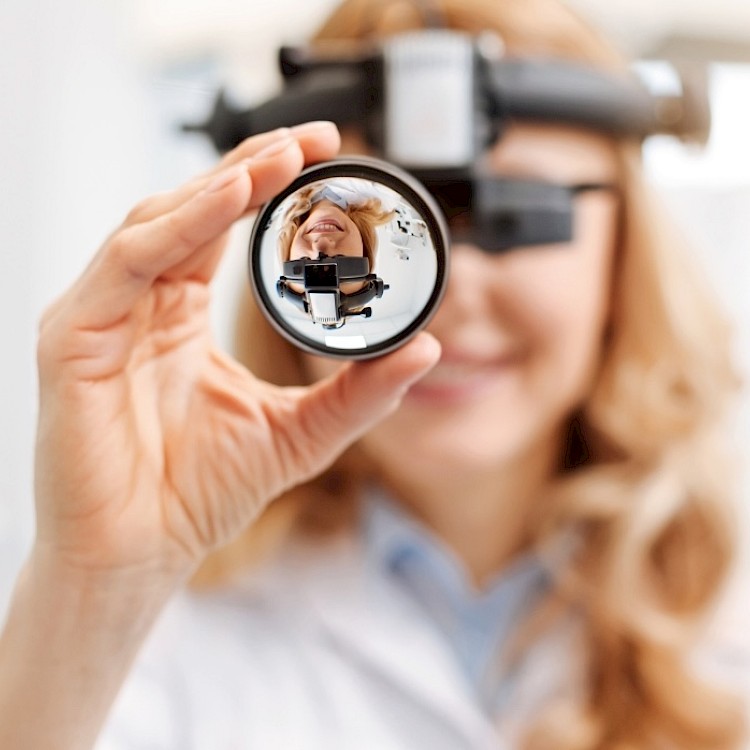Featured
The health of our eyes plays a critical role in our total health. Regrettably, lots of people forget eye treatment up until issues arise. With the boosting use technology, direct exposure to ecological factors, and the natural aging process, taking proactive steps to safeguard your eyes is vital. In this blog site, we'll talk about several of the most usual eye conditions and practical pointers on how to stop them, guaranteeing you maintain optimal vision throughout your life.

- Myopia (Near-Sightedness):
Nearsightedness, or near-sightedness, is a condition where remote things appear blurry while close-by items continue to be clear. It happens when the eye is also long, or the cornea is also bent, triggering light to concentrate in front of the retina. Myopia prevails in youngsters and young people, and its occurrence has actually increased as a result of enhanced screen time.
Avoidance:
Restriction screen time and urge normal breaks to avoid eye pressure. Advertise exterior tasks, as research studies suggest that costs time outdoors can lower the danger of myopia advancement in kids. If you are diagnosed with myopia, putting on rehabilitative lenses such as glasses or contact lenses can help take care of the condition. 2. Hyperopia (Far-Sightedness):
Hyperopia, or far-sightedness, is the opposite of myopia. It occurs when remote items are seen clearly, yet close things appear blurry. Hyperopia happens when the eye is as well short or the cornea is also level, triggering light to concentrate behind the retina.
Prevention:
Regular eye exams can assist find hyperopia early. Similar to nearsightedness, corrective lenses (glasses or contacts) are often recommended to remedy the vision. Practicing great visual behaviors, such as avoiding extreme close-up help long durations, can also help relieve symptoms. 3. Age-Related Macular Degeneration (AMD):
AMD is a condition that affects the macula, the part of the retina in charge of sharp central vision. This age-related condition causes blurry or lost vision in the facility of the visual field, which can make jobs like reading or acknowledging faces difficult. While the exact source of AMD isn't totally understood, it's linked to aging, genes, and ecological elements.
Prevention:
Safeguard your eyes from UV rays by using sunglasses that obstruct 100% of UVA and UVB rays. Eat a diet regimen abundant in anti-oxidants, particularly those located in leafed greens, fish, and nuts, to sustain retinal health. Do not smoke, as cigarette smoking is a substantial risk aspect for AMD. 4. Cataracts:
Cataracts create when the lens of the eye ends up being cloudy, harming vision. This condition is most generally connected with aging however can additionally result from extreme UV exposure, smoking cigarettes, or particular clinical conditions such as diabetic issues.
Prevention:
Wear sunglasses with UV protection to minimize UV direct exposure, which is a leading source of cataracts. Avoid smoking cigarettes, as it increases cataract formation. Preserve a healthy diet high in vitamins C and E, which have actually been shown to support eye health and avoid cataracts. If you have diabetics issues, it is essential to manage your blood sugar level levels to lower your threat. 5. Glaucoma:
Glaucoma describes a group of eye conditions that harm the optic nerve, usually because of high intraocular pressure. It can create steady vision loss and, if left untreated, bring about loss of sight. Glaucoma is commonly called the "silent thief of sight" because it commonly develops without visible symptoms until significant damage has happened.
Prevention:
Obtain normal eye tests, especially if you have a household background of glaucoma, as it is hereditary. Exercise on a regular basis to assist improve blood flow and keep healthy and balanced eye pressure. If identified with glaucoma, following suggested treatments and drugs is essential to manage the condition and protect against more damage. 6. Dry Eyes:
Dry eye syndrome occurs when your eyes don't produce enough tears, or the splits produced are of poor quality. This can lead to inflammation, inflammation, burning, and an abrasive sensation in the eyes. Environmental variables, display time, and certain drugs can worsen dry eyes.
Avoidance:
Blink more regularly when making use of digital devices to keep your eyes moist. Use artificial rips or lubricating eye drops to maintain your eyes hydrated. Raise the humidity in completely dry environments utilizing a humidifier. Drink lots of water to remain hydrated and assistance tear manufacturing. 7. Conjunctivitis (Pink Eye):
Conjunctivitis, or pink eye, is a swelling of the slim cells covering the white part of the eye. It can be triggered by bacterial or viral infections, allergies, or toxic irritants. It is usually contagious, conjunctivitis is generally a light problem that fixes with appropriate treatment.
Prevention:
Laundry your hands frequently and prevent touching your eyes. Do not share individual products such as towels, pillows, or make-up. If you put on get in touch with lenses, see to it to adhere to correct health and cleaning protocols. Verdict:
Taking positive measures to secure your eyes is necessary in preventing common eye problems and keeping healthy vision. Regular eye tests, a healthy and balanced lifestyle, and practicing great habits like appropriate display use and UV security can all assist keep your eyes in top form. By understanding potential threats and taking action currently, you can make certain that your vision remains clear and your eyes stay healthy for years ahead. Don't await eye issues to occur-- take care of your eyes today!
Latest Posts
Low-Cost Car Services: Skilled Repairs at a Great Price
Competence and Enthusiasm in Every Landscape Design
Enhancing Your Residential Or Commercial Property with Constant Panel Fencing